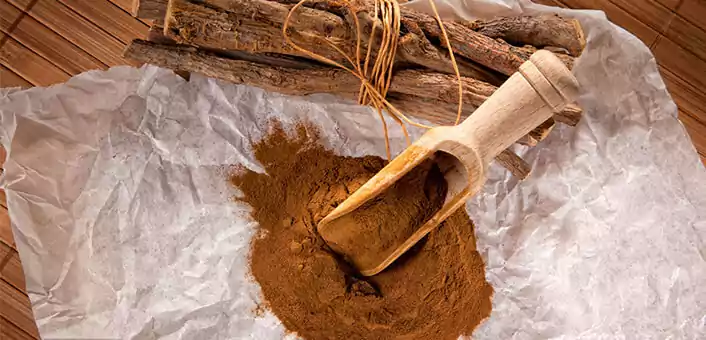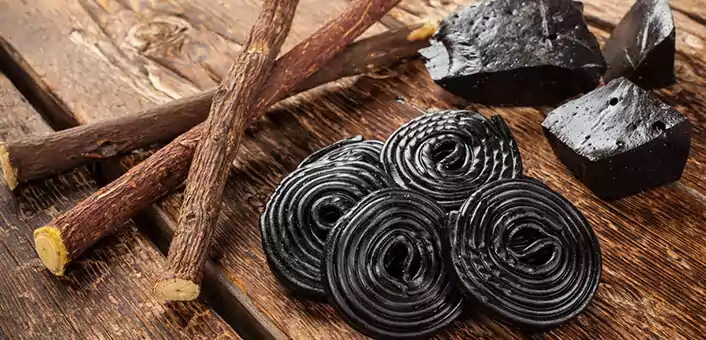
Acid Reflux
Deglycyrrhizinated Licorice: Modern Avataar Of Ancient Acid Reflux Remedy
Jun 30, 2017King Tut, the Egyptian emperor who died at the age of eighteen, had good taste when it came to the afterlife. Apart from the famed treasure that he had himself entombed in, he also had large stores of licorice buried with him.
For centuries, licorice has been revered by cultures across the world. It has been used as an adaptogen (stress-buster), a digestive tonic, a supporter of female health and a balm for sore throat, among others. Licorice has also been used for centuries to treat symptoms of functional dyspepsia that include stomach ulcers and acid reflux.
What is DGL and How is it Different From Licorice?
Licorice (Glycyrrhiza glabra) is a plant native to Asia and the southern parts of Europe. It holds the distinction of being the most used herb in Chinese medicine. The Ayurvedic system of medicine also uses licorice generously in herbal preparations to treat colds, female reproductive issues and gastrointestinal problems.
Although the name Deglycyrrhizinated Licorice, or DGL, sounds distant and unfriendly, it is just a way to say that a certain compound has been removed from licorice, to make it safer for widespread use.
The licorice root has more than 150 compounds. Of these, it is the compound glycyrrhizin that gives the root is sweet flavor. It is an excellent anti-inflammatory compound that also has mild laxative effect and is an expectorant. Now, glycyrrhizin isn’t bad, it is just that with excessive use, it could lead to certain side effects like increased blood pressure, swelling in the tissues and lower potassium levels.
This means that plain licorice extract cannot be used by people with kidney and liver issues and by pregnant women. To make the extract safer for use by everyone, glycyrrhizin is removed from the extract and the standardized extract is called Deglycyrrhizinated Licorice (DGL).
What Does Research Say About DGL?
In a randomized, double-blind, placebo-controlled study (the golden standard of Western Medicine), licorice was found to be highly effective in treating all symptoms of functional dyspepsia, including acid reflux and gastric ulcers. The researchers concluded that licorice supplementation was a safe and effective remedy for functional dyspepsia.
Helicobacter pylori has been implicated in a host of gastrointestinal problems including GERD. A study found that DGL was effective in reducing the load of H. pylori. It was also safer than conventional therapies.
A study also found that 18β-glycyrrhetinic acid, a major bioactive component in licorice root, was capable of suppressing gastric cancer. Gastric cancer may be caused by long term inflammation (as in acid imbalance) of the stomach as well as H. pylori infection, both conditions against which DGL is highly effective. 18β-glycyrrhetinic acid is capable of suppressing many types of tumors and not just stomach tumors. It does so by interfering with the cancer-causing process at the cellular level.
Apart from the positive effects of DGL on gastrointestinal problems, it has also been shown to be effective in relieving adrenal fatigue, pain and helping correct female reproductive problems (by acting as a phytoestrogen, a female hormone analog). It can also boost immunity levels and is an excellent medicine for cough and sore throat.
Mechanism of Action of DGL
In Chinese medicine, licorice has been used mostly as a “guide” along with other medicinal herbs and their extracts. Licorice extract enhances the effects of many other medicines and also guides them to the place where they need to show their effects.
The glycyrrhetinic acid component in DGL shows its anti-inflammatory activity by maintaining increased levels of a hormone called cortisol and by not allowing it to be converted into its inactive form, cortisone. The high levels of cortisol are what cause its anti-inflammatory effects.
DGL has a stomach protective effect by way of increasing the secretion of mucus (the thick, slimy compound that forms a protective layer on top of the stomach cells). This action allows the healing of inflamed tissue and growth of cells to occur. This action of DGL also gives it its ulcer-healing capabilities.
DGL also contains as many as seven highly potent antioxidant compounds that are shown to protect stomach cells from oxidative damage. This activity also promotes liver health and protects liver from oxidative stress of external and internal toxins.
“Leaky gut,” a phenomenon where the integrity of the gastrointestinal mucosal layer is compromised, is at the root of many health complications like GERD and even autoimmune disorders. DGL has been shown to heal leaky gut safely and effectively.
Natural Sources of DGL
DGL is an artificially produced supplement where the glycyrrhizin component is removed chemically from the whole licorice extract. It is commercially available as a supplement in the form of wafers, tea, capsules, powder or chewable tablets.
If you do not suffer from any underlying kidney or liver problem and aren’t pregnant, you can safely consume whole licorice extract.
Is DGL Safe?
As mentioned above, DGL is a much safer alternative to whole licorice extract because of the absence of glycyrrhizin. There are no known side effects of DGL.
The overuse of whole licorice extract might, however, be of concern as it lowers potassium levels fatally.
How Much Of It Helps?
Around 200 to 300 milligrams of DGL approximately 20 minutes before a meal and at bed time can help you with your acid reflux and also help in treating gastric ulcers. Chewable forms of DGL (wafers and tablets) are found to be more effective as they mix with saliva and help release certain compounds that heal wounds and also help in regeneration. Capsules have been found to be less effective.
Final Verdict on DGL
DGL is a safe and potent alternative remedy that has no apparent side effects. It is a classic example of a combination of several powerful plant-based bioactive compounds that show a synergistic effect on bodily functions. This is refreshingly different from the myopic view of conventional medicinal thought, where one active compound alone is extracted to achieve symptom suppression.
Nature has in her bosom ingredients for all known and unknown ills and diseases of humankind. She has balanced all the compounds in a way that in combination they balance the fine workings of the human body. It is time we take a leaf out of Nature’s own book and lead a balanced life; one that rests on the principles of a holistic diet and healthy lifestyle modifications for lasting health and wellness.
References:
An Extract of Glycyrrhiza glabra (GutGard) Alleviates Symptoms of Functional Dyspepsia: A Randomized, Double-Blind, Placebo-Controlled Study
https://www.ncbi.nlm.nih.gov/pmc/articles/PMC3123991/
Effect of GutGard in the Management of Helicobacter pylori: A Randomized Double Blind Placebo Controlled Study
https://www.hindawi.com/journals/ecam/2013/263805/
18β-glycyrrhetinic acid suppresses gastric cancer by activation of miR-149-3p-Wnt-1 signaling
https://www.ncbi.nlm.nih.gov/pmc/articles/PMC5342136/
Antiulcer activities of liquorice and its derivatives in experimental gastric lesion induced by ibuprofen in rats
http://www.sciencedirect.com/science/article/pii/037851739400377H





